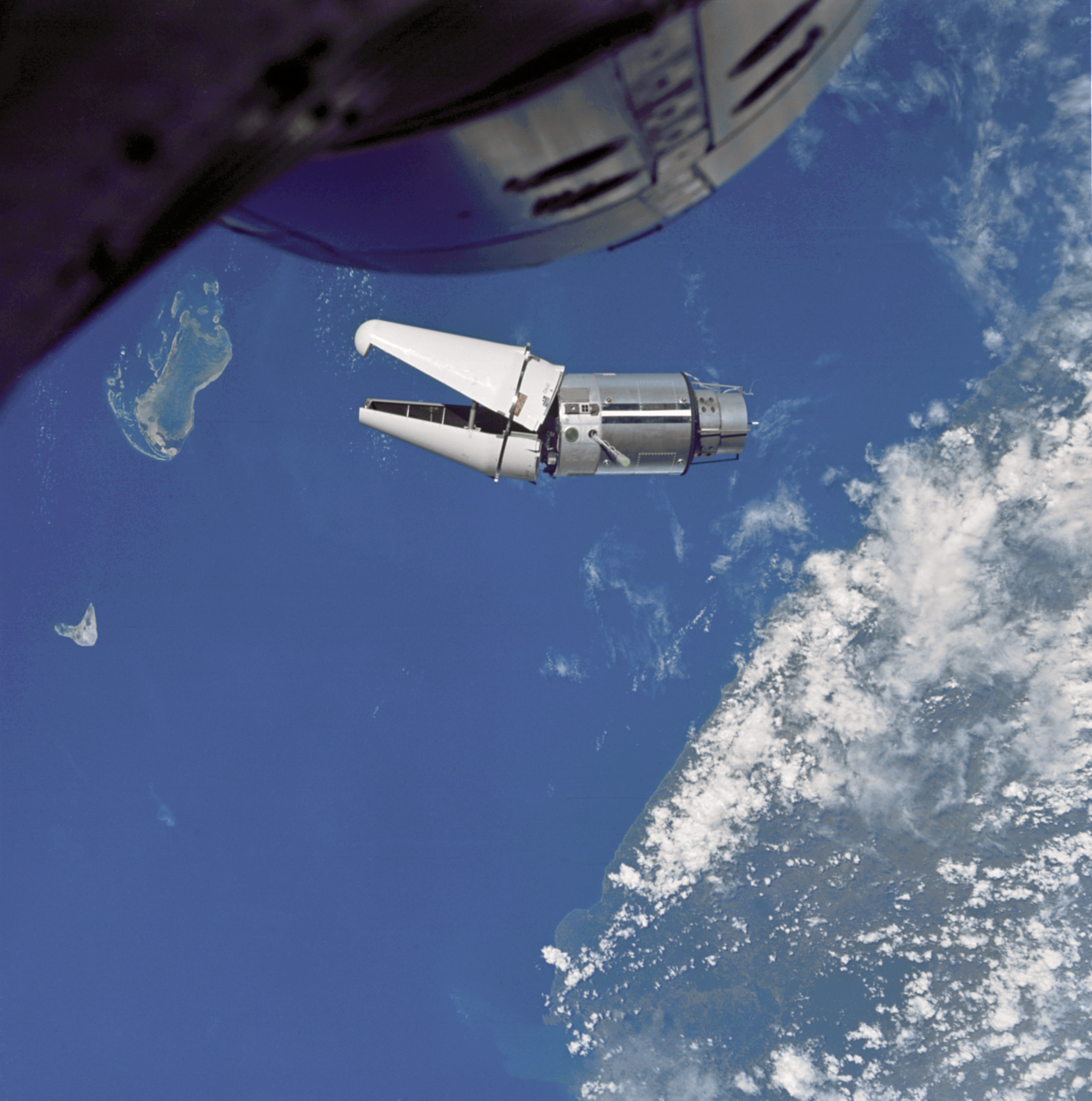
Gemini 9A
Gemini 9A (officially Gemini IX-A)[2] was a 1966 crewed spaceflight in NASA's Gemini program. It was the seventh crewed Gemini flight, the 15th crewed American flight and the 23rd spaceflight of all time (includes X-15 flights over 100 kilometers (62 mi)). The original crew for Gemini 9, command pilot Elliot See and pilot Charles Bassett, were killed in a crash on February 28, 1966, while flying a T-38 jet trainer to the McDonnell Aircraft plant in St. Louis, Missouri to inspect their spacecraft. Their deaths promoted the backup crew, Thomas P. Stafford and Eugene Cernan, to the prime crew. The mission was renamed Gemini 9A after the original May 17 launch was scrubbed when the mission's Agena Target Vehicle was destroyed after a launch failure. The mission was flown June 3–6, 1966, after launch of the backup Augmented Target Docking Adaptor (ATDA). Stafford and Cernan rendezvoused with the ATDA, but were unable to dock with it because the nose fairing had failed to eject from the docking target due to a launch preparation error. Cernan performed a two-hour extravehicular activity, during which it was planned for him to demonstrate free flight in a self-contained rocket pack, the USAF Astronaut Maneuvering Unit. He was unable to accomplish this due to stress, fatigue, and overheating.
Mission type
2191
3 days, 20 minutes, 50 seconds
47
Gemini SC9
3,800 kilograms (8,300 lb)
2
1
2 hours, 7 minutes
June 3, 1966, 13:39:33 UTC
Titan II GLV, s/n #62-12564
June 6, 1966, 14:00:23 UTC
272 kilometers (147 nmi)
274 kilometers (148 nmi)
28.8 degrees
89.97 minutes
June 6, 1966[1]
The spacecraft is on display at the Kennedy Space Center Visitor Center, Florida.

